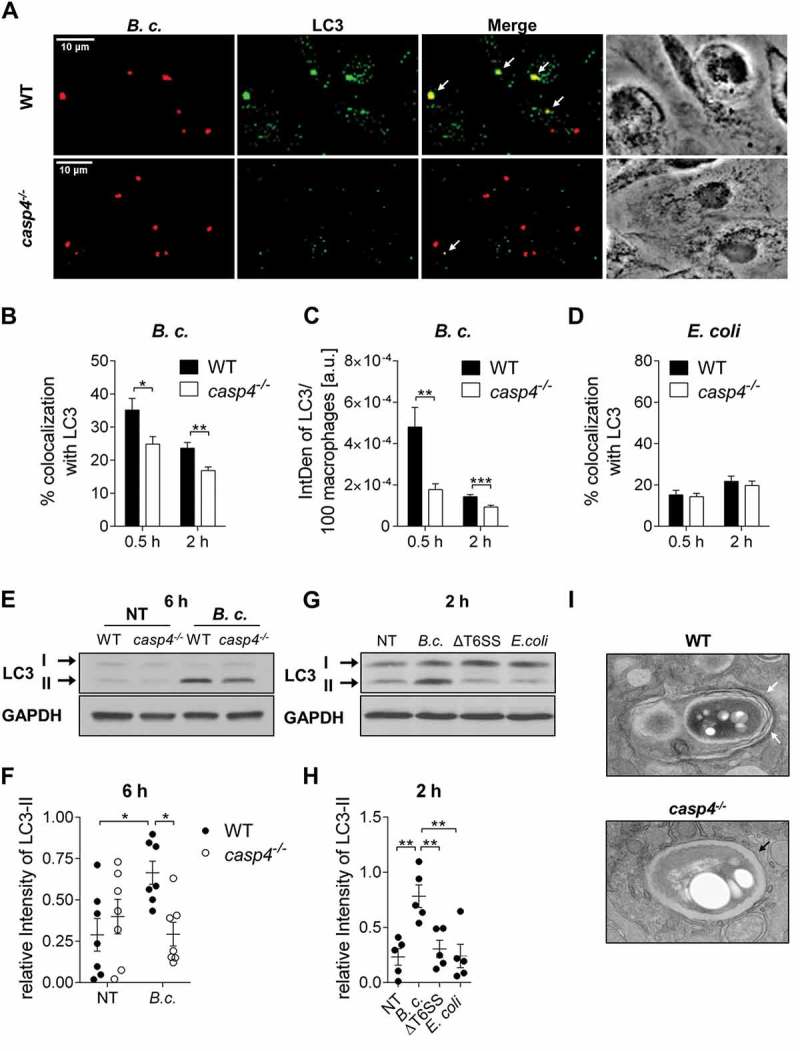Figure 3.

CASP4/caspase-11 promotes autophagosome formation in response to pathogenic bacteria. (a) LC3 immunofluorescence assay of B. cenocepacia (B.c.)-infected WT and casp4−/- macrophages at 30 min post infection. White arrows point to B. cenocepacia-LC3 colocalization. (b) Quantification of B. cenocepacia colocalized with LC3. (c) Quantification of total LC3 puncta in B. cenocepacia-infected WT and casp4−/- macrophages using ImageJ Software. a.u., arbitrary units. (d) Quantification of E. coli colocalized with LC3 in WT and casp4−/- macrophages. (A-D) Values are mean percentage ± SEM calculated by scoring 24 randomly chosen fields of view from at least 3 experiments. Statistical analyses were performed using Student’s t-test. (e) LC3-II immunoblot analysis from B. cenocepacia-infected WT and casp4−/- macrophages at 6 h post infection. (f) Densitometry analysis of B. cenocepacia-induced LC3-II in WT and casp4−/- macrophages at 6 h post infection. Shown are mean ± SEM of 7 independent experiments (n = 7). Statistical analysis was performed using two-way ANOVA. (g) LC3 immunoblot analysis in WT macrophages at 2 h after infection with B. cenocepacia wild-type, B. cenocepacia T6SS mutant and E. coli. (h) Densitometry analysis of LC3-II in WT macrophages treated as in (G). Shown are mean ± SEM of 5 independent experiments (n = 5). Statistical analysis was performed using one-way ANOVA. (i) Qualitative transmission electron microscopy images of B. cenocepacia-infected WT and casp4−/- macrophages at 2 h post infection. White arrows indicate a multilamellar membrane characteristic for autophagosomes. Black arrow indicates a single-membrane vacuole. *p ≤ 0.05, **p ≤ 0.01, ***p ≤ 0.001. No treatment (NT).
